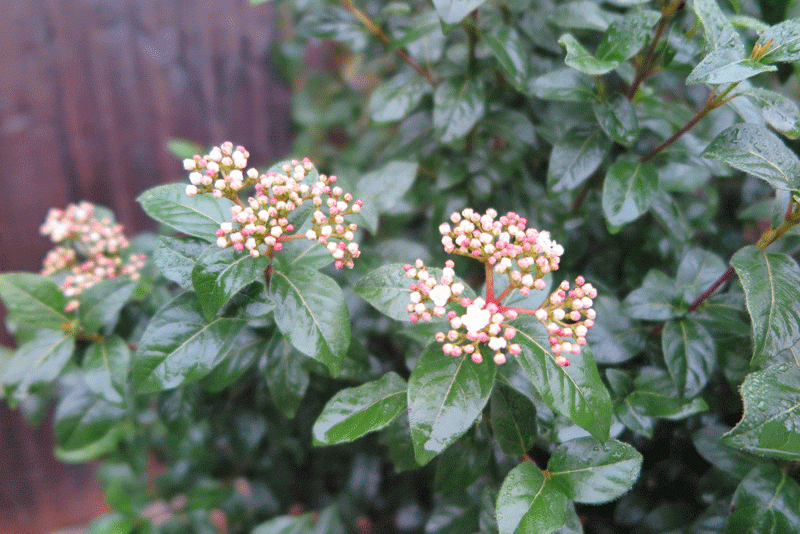Viburnum
Viburnum, Viburnum
Viburnum is a large genus of excellent garden plants. They are easy to grow, quite tough and attractive in any garden. In Texas, they are most often used in shady locations to provide evergreen foliage and blooms.

Growing
Viburnums grow best in partial sun with afternoon shade; or bright dappled shade throughout the day. Certain types will tolerate more direct sun. The soil should be of average fertility, slightly acidic, moist and well drained. While generally low-maintenance once established, plants do prefer consistent moisture. Mulch plants to conserve moisture.
Tips
Viburnums can be used as blooming background shrubs in shady beds, privacy screens and understory specimen plants. They are a good choice for plantings near patios, decks and swimming pools. Some varieties are deciduous so make sure to research the variety before making your selection.
Recommended
Many viburnum species, hybrids and cultivars of varying hardiness are available. Check with your local nursery for best options for your area. There are several species native to Texas. The following are good choices for Texas gardens.
V. x burkwoodii (Burkwood viburnum) is an upright to rounded, deciduous to semi-evergreen shrub. It grows 6–10' tall and spreads 5–8'. Clusters of fragrant, pinkish white flowers appear in mid- to late spring. The subsequent red fruit ripens to black. USDA zones 4-8
V. dentatum a Texas native, Arrowwood viburnum is adapted to all kinds of soils. Excellent as a deciduous understory plant or for wooded areas. Size can vary widely based on conditions, from 3’-20’ tall and 2’-20’ wide. Showy white flowers in spring. USDA zones 2-8
V. odoratissimum also known as sweet viburnum is a medium to fast growing evergreen that produces clusters of white flowers in spring. Grows 12’-15’ tall to 12’-15’ wide. Excellent privacy screen. Part sun/shade. USDA zones 8-10
V. rufidulum also known as rusty blackhaw viburnm, is a Texas native with deciduous glossy green leaves and clusters of white flowers in spring. Blue fruit in fall. Rusty blackhaw viburnum can grow in just about any soil as long as it’s well drained. Prefers moist shaded areas. Grows 10’-30’ tall depending on environment. USDA zones 5-9
V. suspensum known as sandanqua viburnum, a medium to fast growing evergreen with small white flowers in spring. Very compact size, growing only 6’-8’ tall and just as wide. Part sun/shade. USDA zones 8-10
V. tinus ‘Spring Bouquet’ a stellar performer in Texas gardens. Part sun/shade, although plants seem to tolerate a bit more direct sun than other varieties. A dense, fast-growing evergreen that produces heavy clusters of white or pinkish blooms in spring. Blue/black fruits.6’-10’ tall and 4’-6’ wide. Good hedge. USDA zones 7-11
Sidebar: Viburnums look great in the shade of evergreen trees. Their richly textured foliage complements shrubs and perennials that bloom in late spring.


